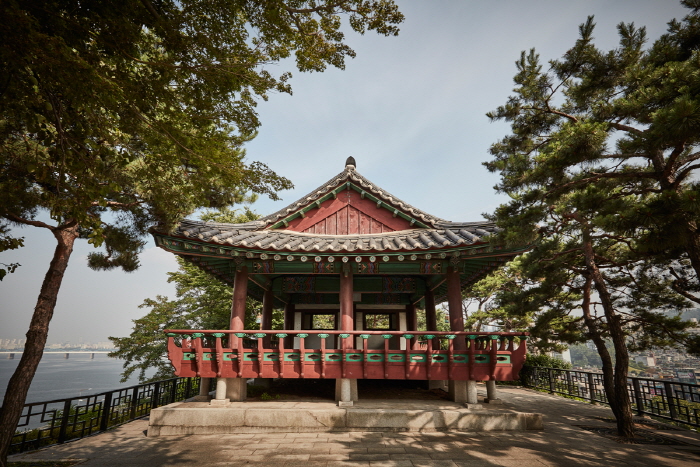Nike - IPARK Mall Branch [Tax Refund Shop] (나이키 용산아이파크)
5.0Km 2024-04-23
6F, 55, Hangang-daero 23-gil, Yongsan-gu, Seoul
-
Zara - IPARK Mall Branch [Tax Refund Shop] (자라 아이파크몰)
5.0Km 2024-04-23
55, Hangang-daero 23-gil, Yongsan-gu, Seoul
-
It Michaa [Tax Refund Shop] (잇미샤)
5.0Km 2024-04-19
4F I’Park Mall, 55, Hangang-daero 23-gil, Yongsan-gu, Seoul
-
Hyundai IPARK Mall [Tax Refund Shop] (현대 아이파크몰)
5.0Km 2024-04-18
55, Hangang-daero 23-gil, Yongsan-gu, Seoul
-
IPARK Mall Clinic [Tax Refund Shop] (아이파크몰의원)
5.0Km 2024-04-18
(Hangang-ro 3-ga) I'Park Mall Living Hall 6th floor, 55, Hangang-daero 23-gil, Yongsan-gu, Seoul
-
Chicor - IPARK Mall Branch [Tax Refund Shop] (시코르 용산아이파크)
5.0Km 2024-06-27
3F, 55, Hangang-daero 23-gil, Yongsan-gu, Seoul
-
Olive Young - Yongsan I'Park Mall Branch [Tax Refund Shop] (올리브영 용산아이파크몰점)
5.0Km 2024-06-27
4F, 55, Hangang-daero 23-gil, Yongsan-gu, Seoul
-
Song Won (송원)
5.0Km 2024-03-15
35-4 Dongho-ro 24-gil, Jung-gu, Seoul
+82-2-2275-3118
Song won is a Korean restaurant located in Jangchung-dong Gourmand Alley. They specialize in high-quality Korean beef barbecue such as bulgogi and galbi, seasoned with a variety of 20 different natural ingredients. Additionally, they offer traditional Korean dishes like hot stone pot rice and noodles. Across the street, visitors can find Jangchung-dong Jokbal Street, and both Jangchungdan Park and Jangchung Gymnasium are within walking distance.
Columbia - Konkuk Univ. Branch [Tax Refund Shop] (컬럼비아 건대)
5.0Km 2024-04-16
1F, 59, Dongil-ro 20-gil, Gwangjin-gu, Seoul
-
Hyosajeong Pavilion (효사정)
5.0Km 2025-01-13
55, Hyeonchung-ro, Dongjak-gu, Seoul
+82-2-820-9848
Hyosajeong Pavilion is where Nohan, the second vice premier of the Joseon dynasty during King Sejong and King Sejo’s reign, stayed. After he lost his mother, he built the pavilion to mourn at her grave while still being able to see his father’s grave in Gaeseong to the North. His brother-in-law, then Minister of the Interior, Gang Sa-deok named the pavilion “Hyosajeong,” which means pavilion of filial piety.
In order to find the original location of the pavilion, poems by Jeong Inji and Seo Geojeong and an old map of Korea were referenced, but the pavilion was not found because the surrounding landscape had changed too much. As a result, a location was selected and the pavilion was reconstructed at its current location. The house is 3 kan* in the front and 2 kan* on the side. The roof is a hip-and-gable roof. The pavilion has one room with under floor heating and a railing around the pavilion
(* kan: a traditional measurement that corresponds to the space between two columns)
![Nike - IPARK Mall Branch [Tax Refund Shop] (나이키 용산아이파크)](http://tong.visitkorea.or.kr/cms/resource/16/2889616_image2_1.jpg)
![Zara - IPARK Mall Branch [Tax Refund Shop] (자라 아이파크몰)](http://tong.visitkorea.or.kr/cms/resource/67/2889867_image2_1.jpg)
![It Michaa [Tax Refund Shop] (잇미샤)](http://tong.visitkorea.or.kr/cms/resource/25/2891025_image2_1.jpg)

![IPARK Mall Clinic [Tax Refund Shop] (아이파크몰의원)](http://tong.visitkorea.or.kr/cms/resource/21/2890621_image2_1.jpg)
![Chicor - IPARK Mall Branch [Tax Refund Shop] (시코르 용산아이파크)](http://tong.visitkorea.or.kr/cms/resource/67/3314267_image2_1.jpg)
![Columbia - Konkuk Univ. Branch [Tax Refund Shop] (컬럼비아 건대)](http://tong.visitkorea.or.kr/cms/resource/52/2878852_image2_1.jpg)

 English
English
 한국어
한국어 日本語
日本語 中文(简体)
中文(简体) Deutsch
Deutsch Français
Français Español
Español Русский
Русский